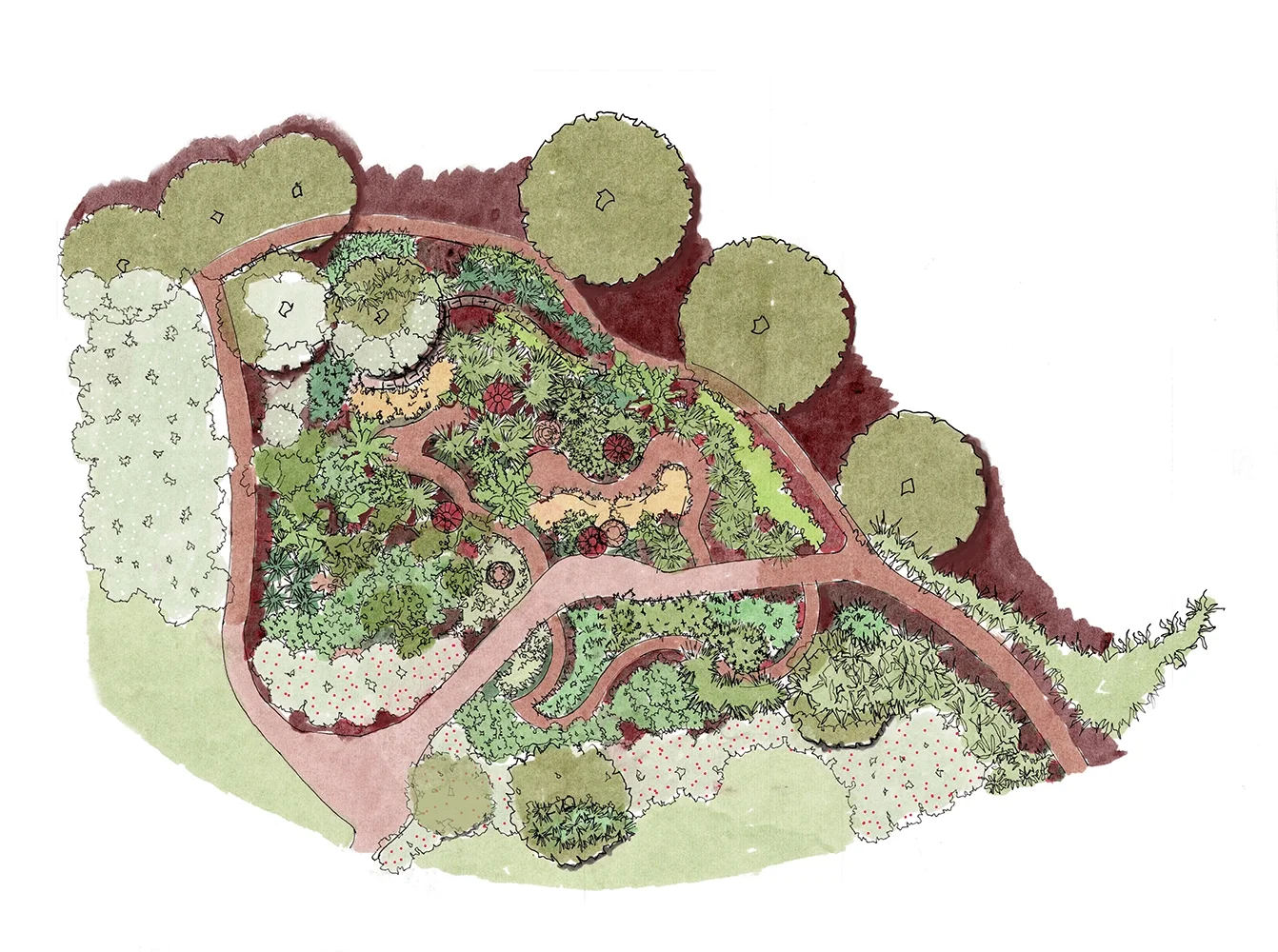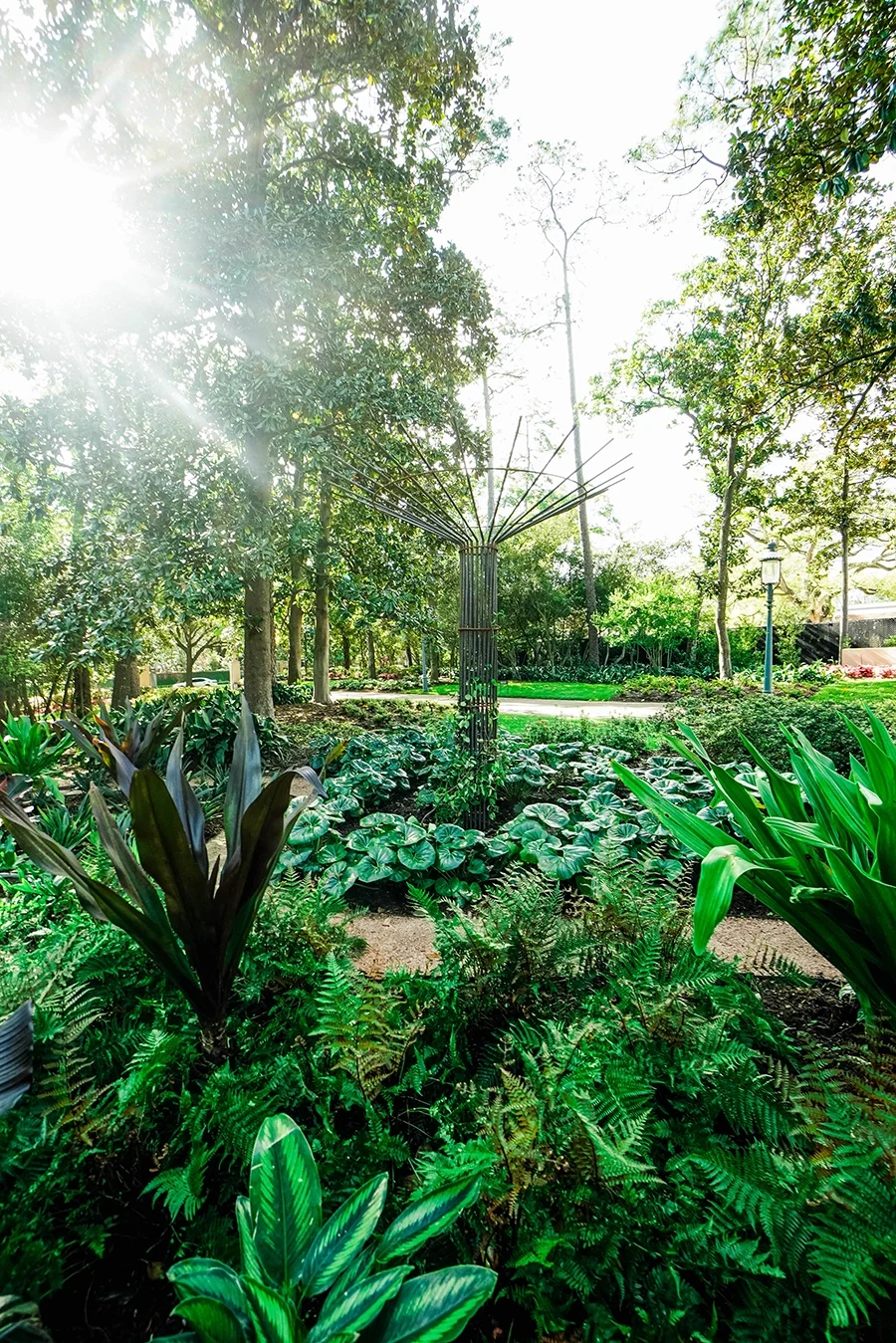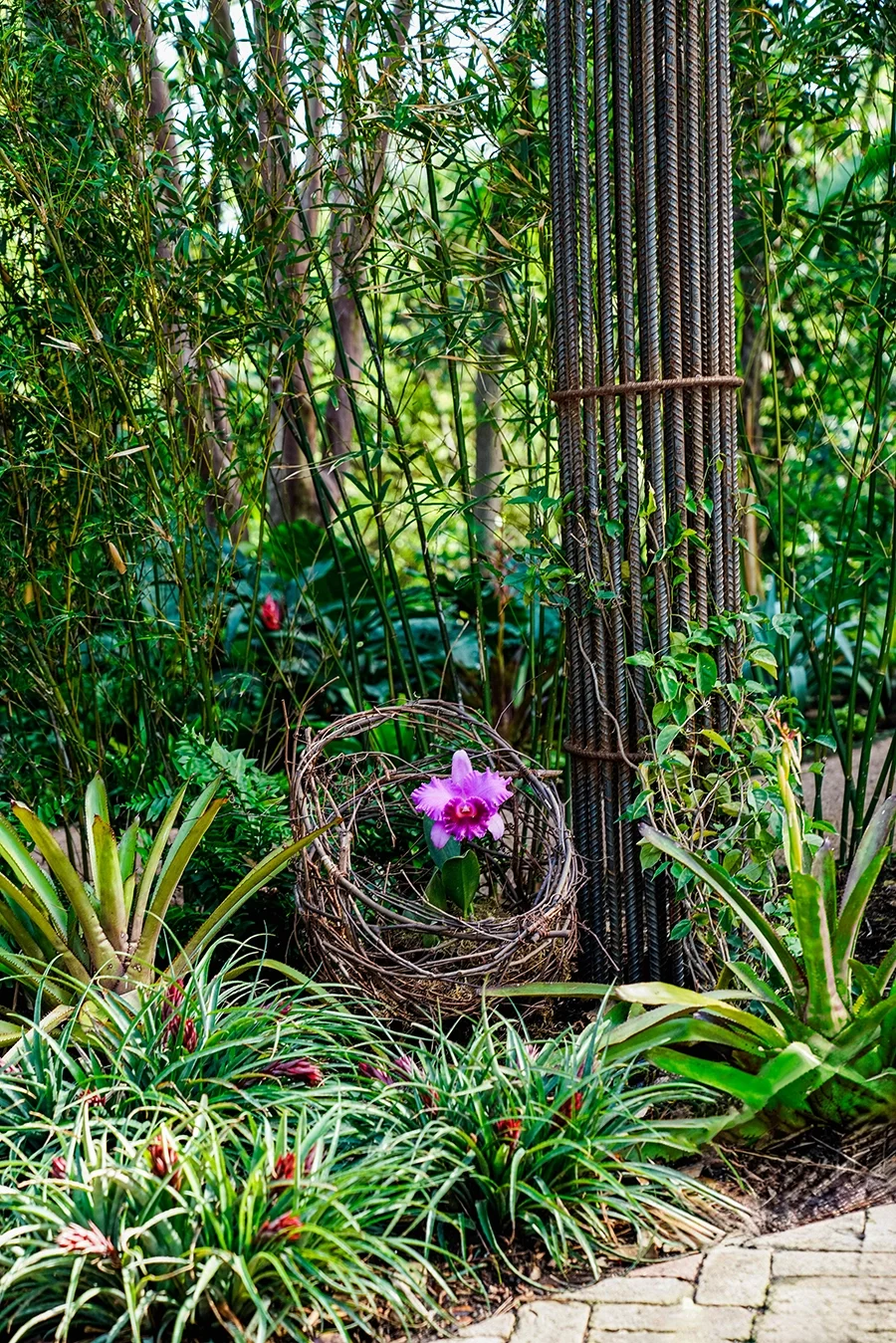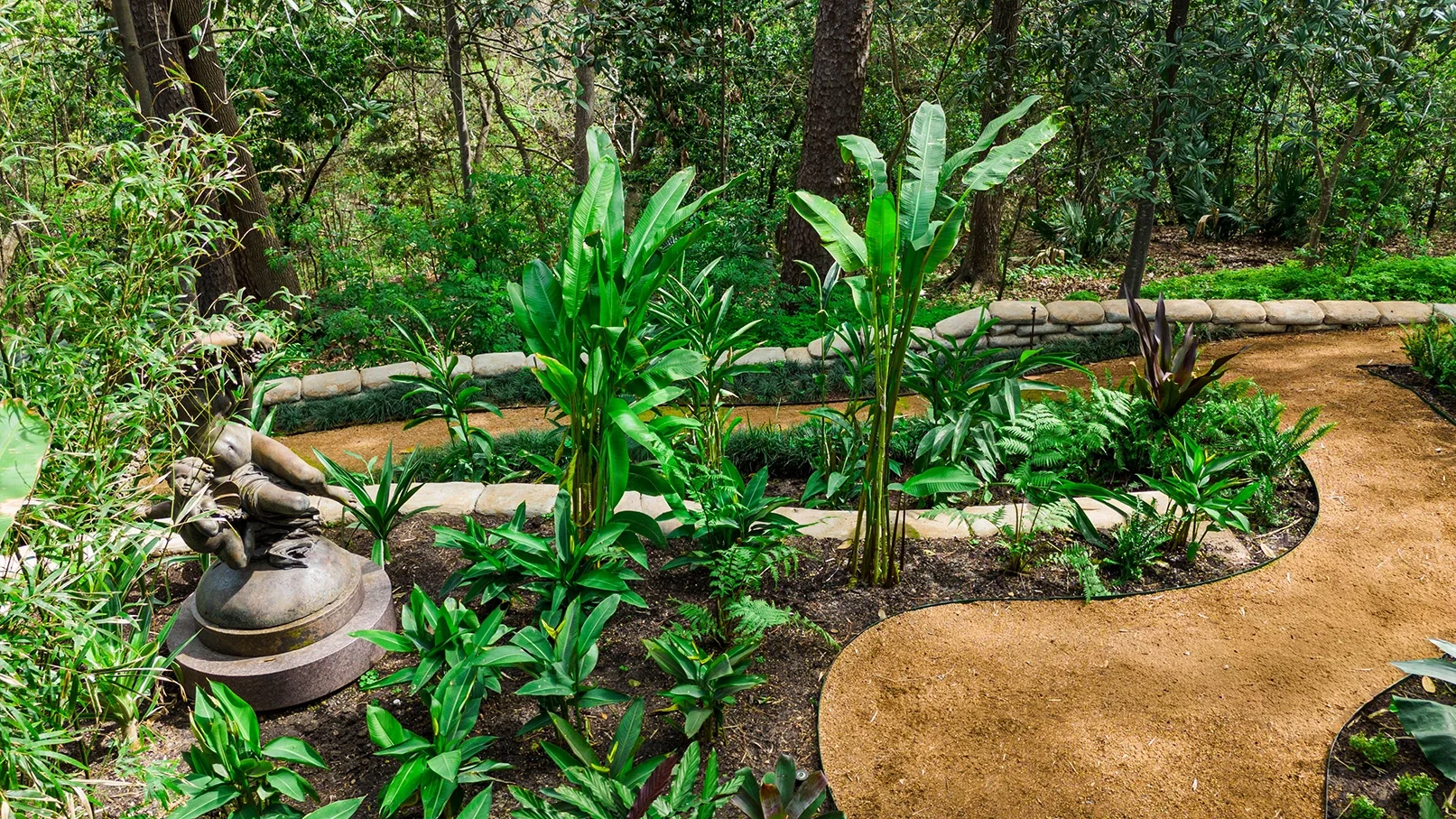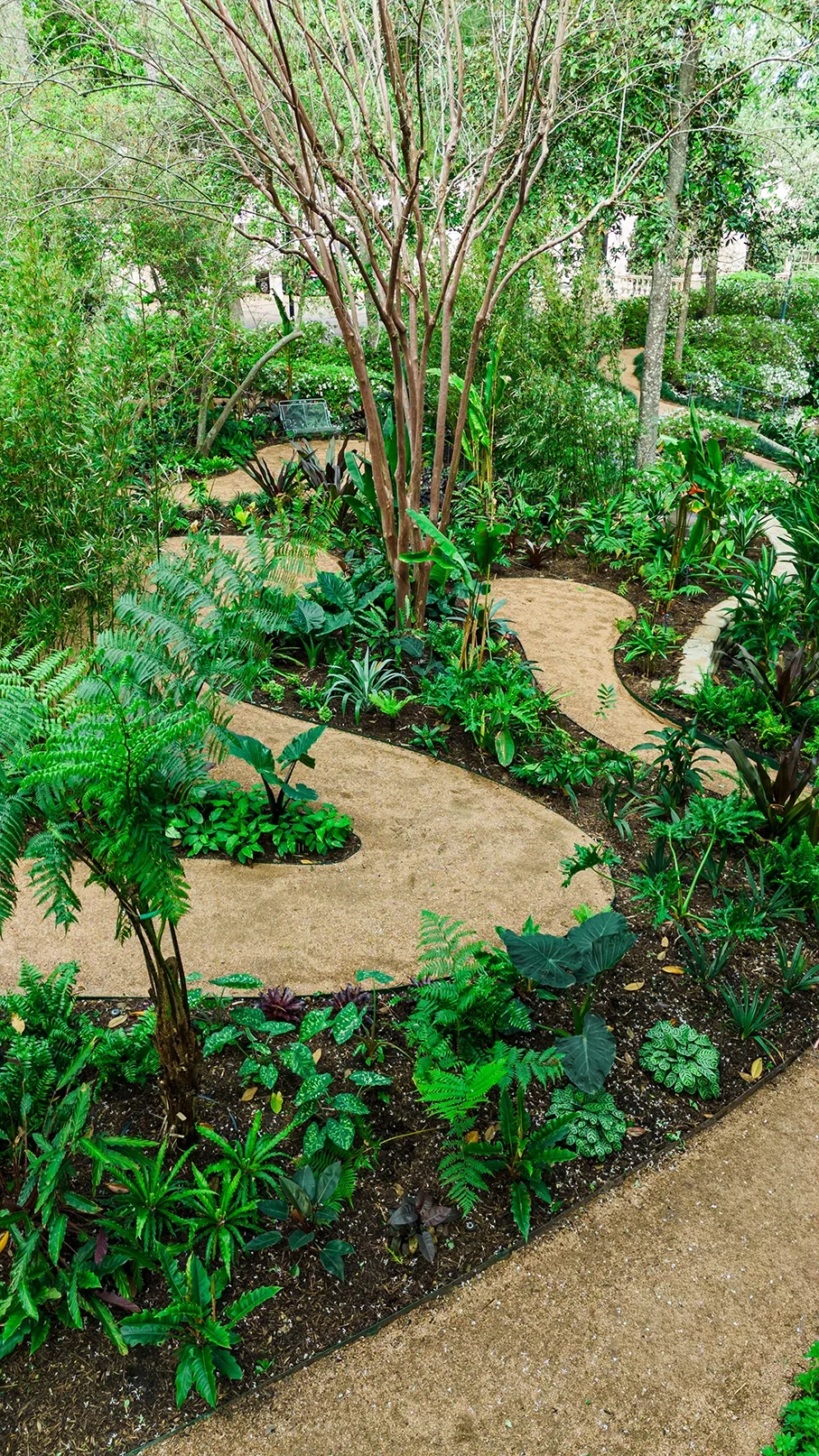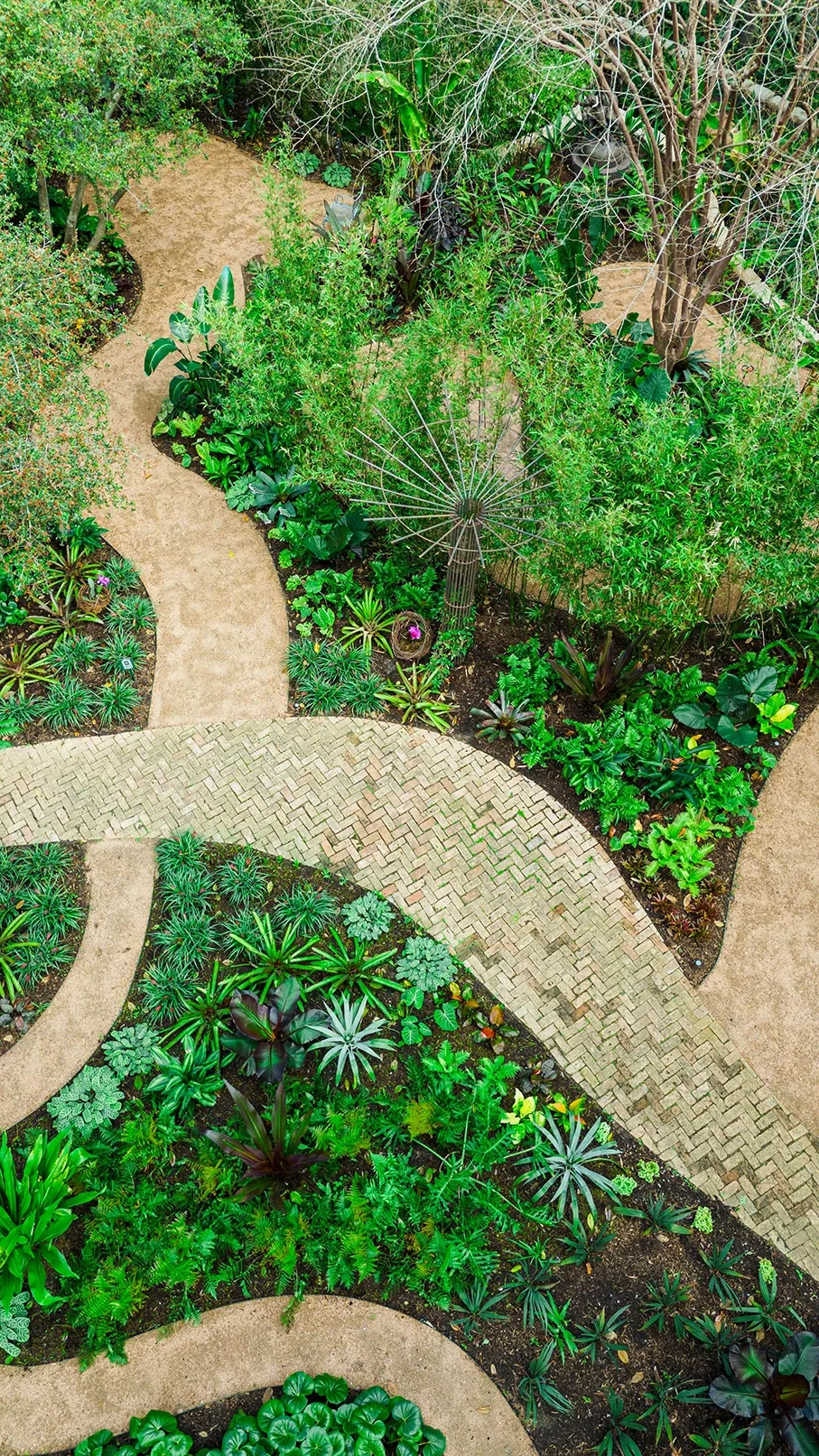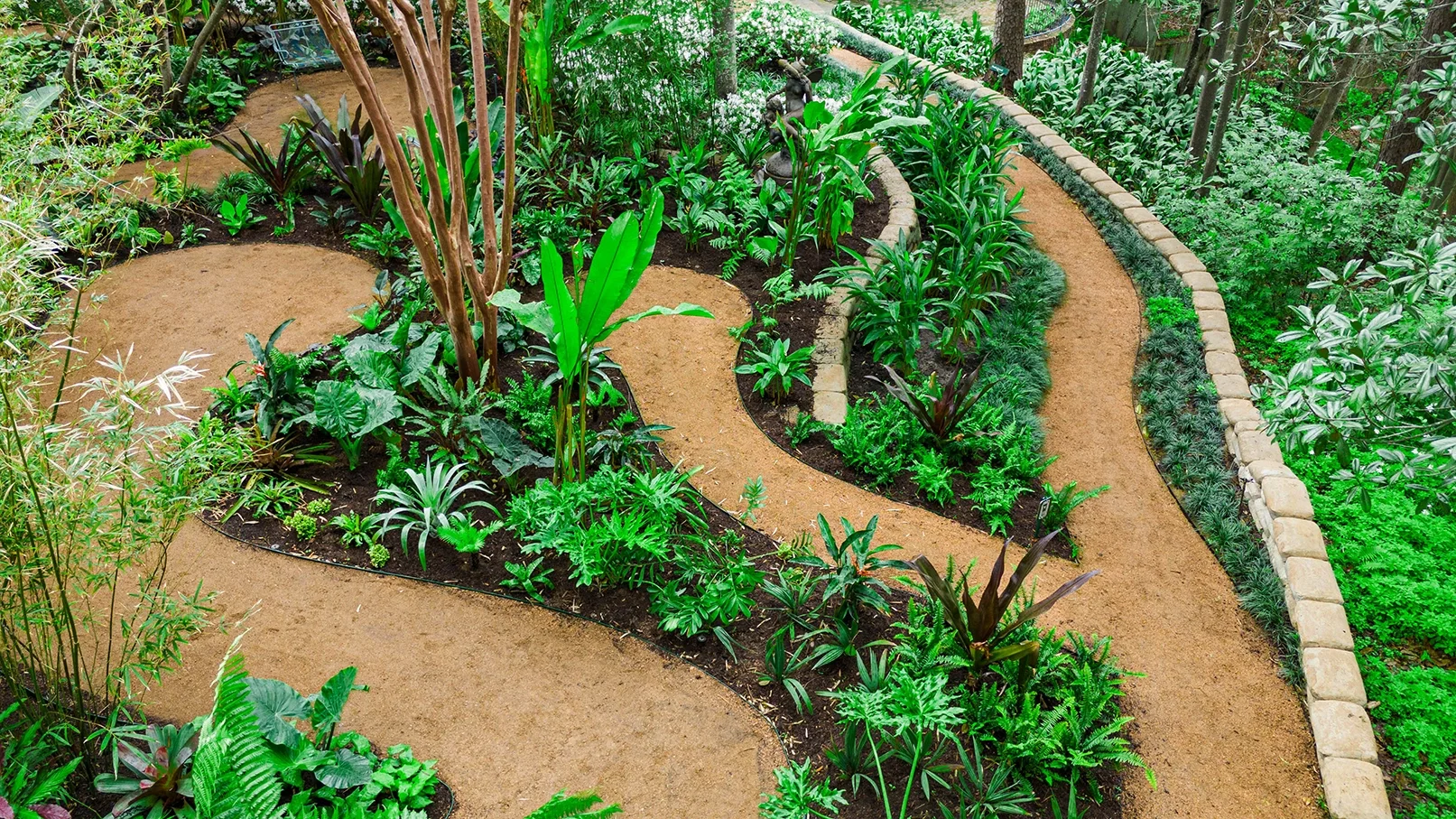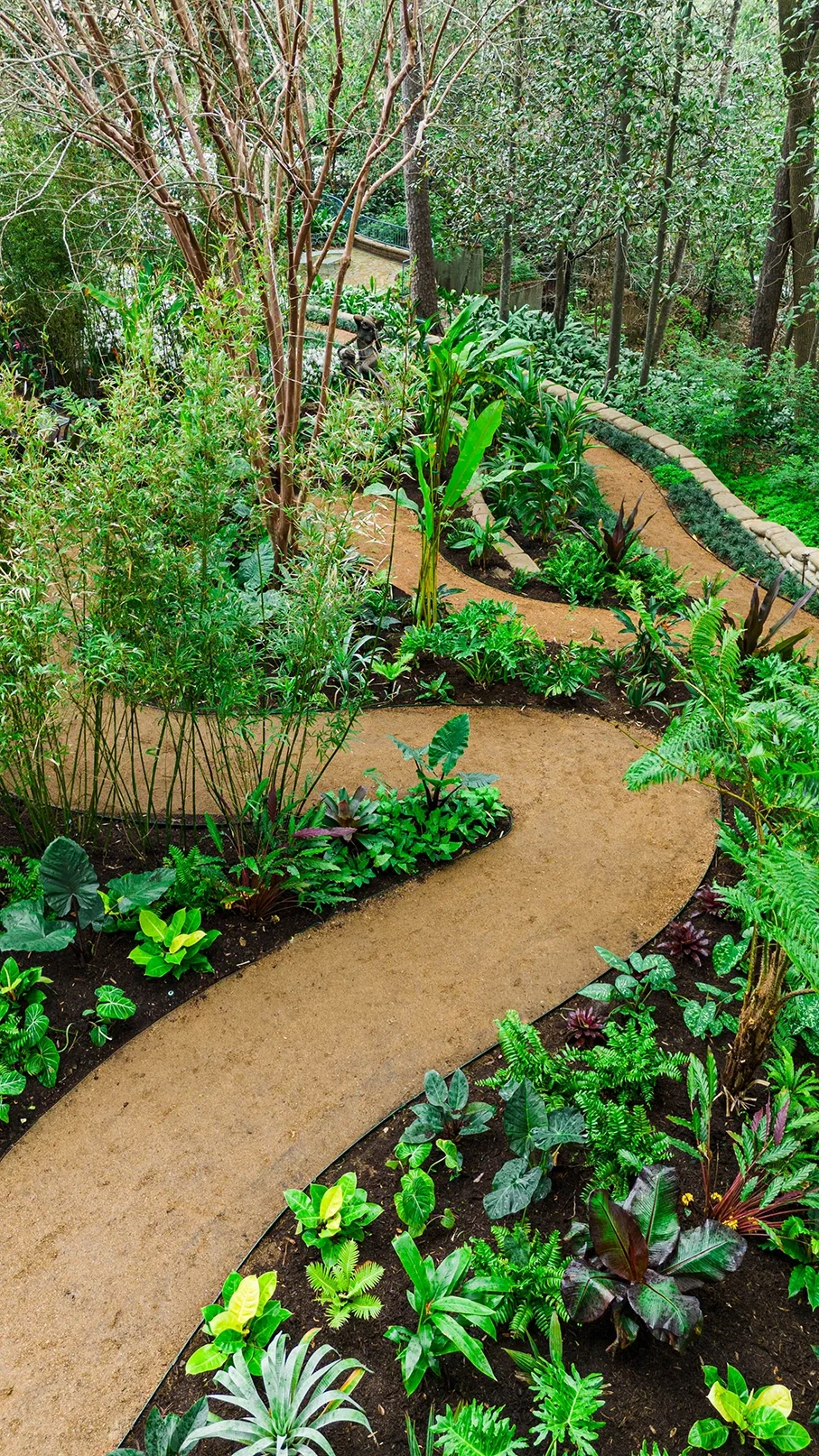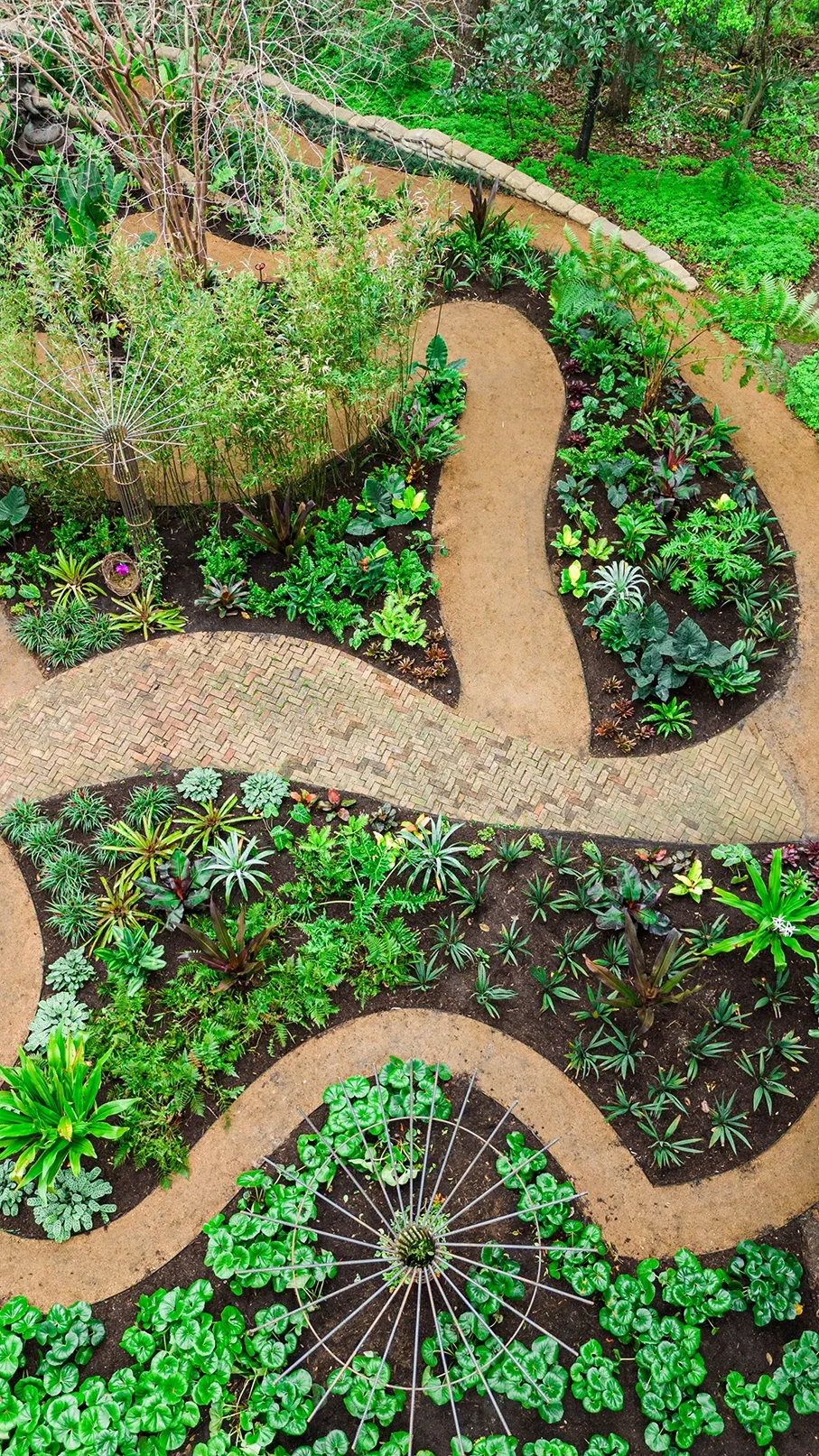Bringing History and Nature Together: Amy Sullivan on the Landscape Architecture of Rienzi
When the Museum of Fine Arts, Houston invited Hogue to help shape the landscape for Rienzi, time was not a luxury. “We had four days,” recalls Amy Sullivan, Hogue’s landscape architect and project lead. “Four days to bring this place to life — and make sure it felt like it had always been here.”
That compressed schedule would test every ounce of design intuition, logistics coordination, and craftsmanship Hogue is known for. The result is a story of creative precision and collaboration — one that reveals how great landscape architecture can thrive under pressure.
A Site Steeped in History
Rienzi, the historic house museum of the Museum of Fine Arts, Houston, sits among rolling gardens in the River Oaks neighborhood, overlooking Buffalo Bayou. Designed in the 1950s by John F. Staub, the Georgian-style residence is both grand and intimate — a place where art, architecture, and landscape have always intertwined.
When Hogue was brought in, the gardens needed a refresh that respected this legacy. Amy Sullivan explains:
“Our goal was to honor the architecture and bring a renewed sense of life to the landscape — something that feels timeless but vibrant, curated yet natural.”
A Design-Build Sprint
The timeline? Four days from start to finish.
Hogue’s team mobilized immediately — designing, sourcing, and installing everything almost simultaneously. “We were sketching, revising, and planting at the same time,” Amy recalls. “The coordination was like choreography — every trade, every delivery, every decision had to sync.”
Plant material came in from Florida, chosen for both availability and aesthetic compatibility with Rienzi’s historic character. “We needed mature material that could instantly establish presence — palms, camellias, and layered greenery that gave the garden an immediate sense of age,” she says.
Despite the pace, there was no compromise on design integrity.
“Speed doesn’t mean shortcuts,” Amy emphasizes. “It means clarity — knowing your vision so well that every decision aligns with it.”
The Design Approach
Even in that accelerated timeframe, the landscape architecture was guided by the same core principles that define Hogue’s work:
Architectural alignment: Every path and planting bed connects with the home’s geometry, reinforcing John Staub’s original sightlines.
Garden ‘rooms’ and movement: Visitors experience a deliberate flow — from structured terraces to softer garden spaces that open toward the Bayou.
Textural layering: A balance of structural evergreens, flowering color, and broadleaf subtropicals that thrive in Houston’s climate.
Sustainability: Even under time constraints, Hogue used regionally appropriate species and efficient irrigation — ensuring longevity beyond the installation week.
“We weren’t just planting a garden,” Amy notes. “We were composing an experience — something that transitions seamlessly from the house to the landscape.”
Collaboration and Precision
Working closely with MFAH staff, curators, and preservation consultants, Hogue coordinated every aspect of logistics, access, and finish details to meet museum standards. The result was a fully realized design — installed, detailed, and flourishing — within the week.
“It was one of those projects where everyone said yes. Everyone pulled in the same direction. And somehow, by the fourth evening, we stood there under the lights, and it just worked.” — Amy Sullivan
Why Rienzi Matters
Rienzi demonstrates that landscape architecture is not only about planting — it’s about storytelling through space. Under extraordinary time constraints, Hogue’s team delivered a composition that honors Houston’s artistic heritage while showcasing the adaptability of design-build expertise.
“When a visitor comes to Rienzi, they feel a harmony between house and garden, between history and living nature,” Amy reflects. “That’s the magic — when urgency turns into artistry.”
Lessons from Rienzi for Designers & Clients
From Rienzi’s rapid transformation, Amy Sullivan offers lasting insights:
Preparation meets improvisation: Clear design principles allow flexibility when time is limited.
Source smart: Partnering with trusted growers — even across states — can make quality possible on tight deadlines.
Respect the architecture: Let the building lead, and the landscape will follow gracefully.
Sustainability is timeless: Fast doesn’t have to mean fleeting. Design with longevity in mind.
The Lasting Impression
Today, Rienzi’s gardens appear effortless — as if they’ve grown there for decades. Few visitors realize the transformation happened in less than a week. That’s the beauty of great landscape architecture: when it’s done right, it feels inevitable.
“That’s what design should do,” Amy says. “Disappear into the experience, leaving only the sense of beauty and belonging behind.”



